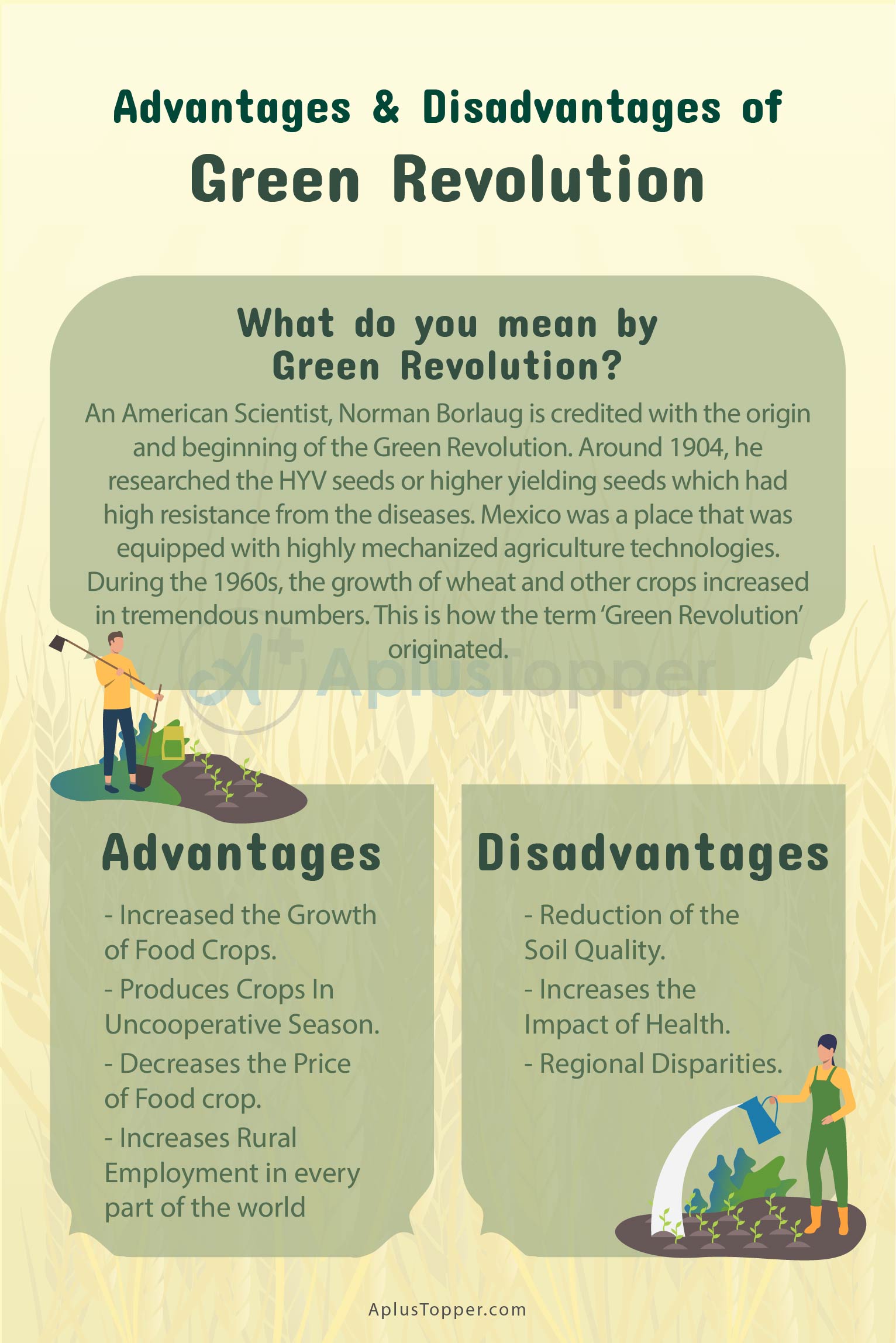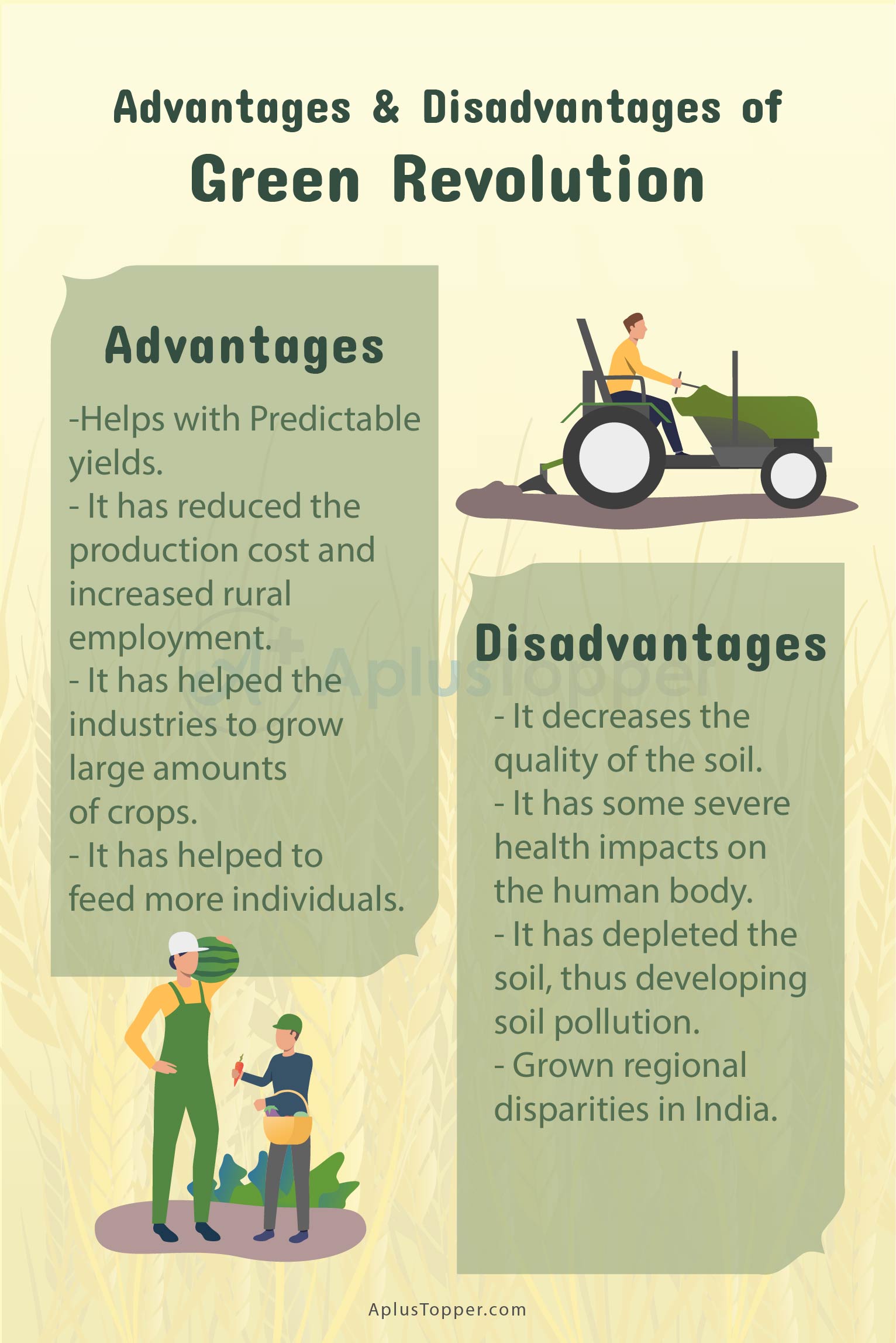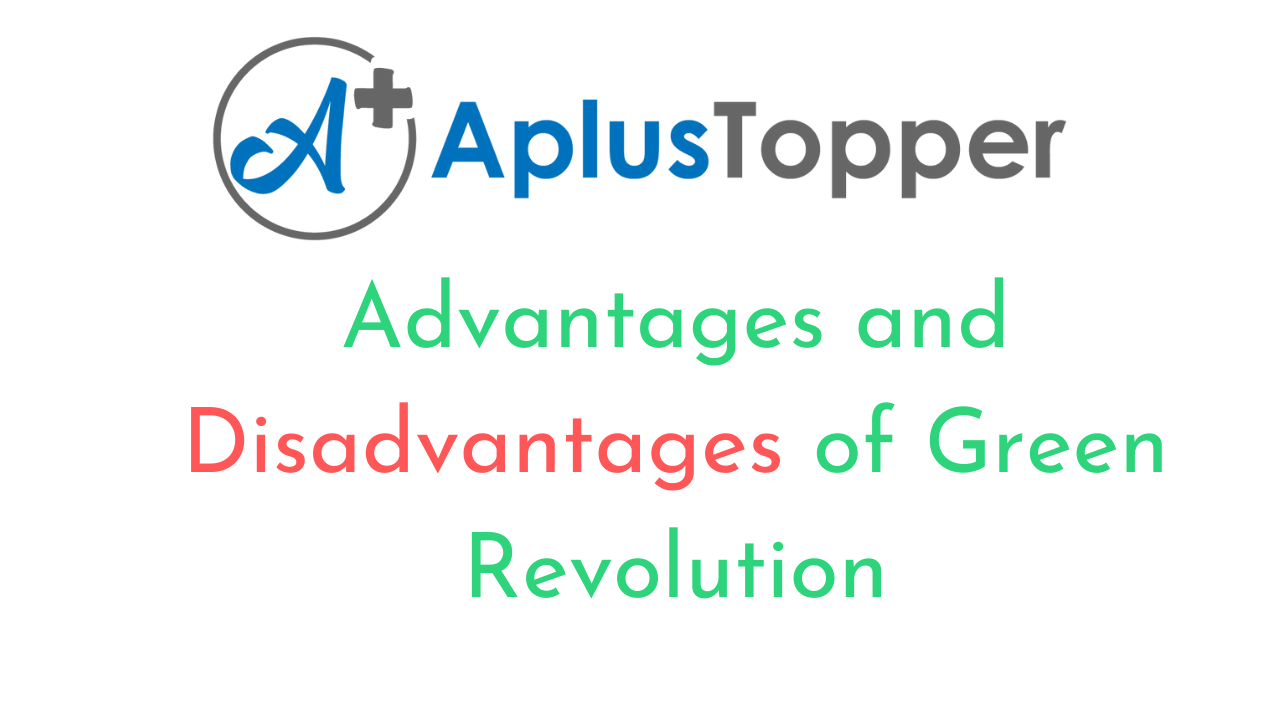Advantages And Disadvantages Of Green Revolution: An agricultural reform that helped to increase the production of crops worldwide during the 1950 and late 1960s can be defined as the Green Revolution. It was initiated by Norman Borlaug who is also known as the ‘Father of the Green Revolution. This revolution took place in two regions i.e. India and America. The green revolution has both negative and positive impacts. For example, it increased food production tremendously.
In contrast, the production was limited to only a few crops such as wheat, rice, jowar, and bajra. The green revolution had global biodiversity. The impact of green revolution had a successful impact on the Asian subcontinent such as Mexico. We shall cover both the attributes ( advantages and disadvantages ) in the coming sections.
Students can also find more Advantages and Disadvantages articles on events, persons, sports, technology, and many more.
What do you mean by Green Revolution? Advantages and Disadvantages of Green Revolution
An American Scientist, Norman Borlaug is credited with the origin and beginning of the Green Revolution. Around 1904, he researched the HYV seeds or higher yielding seeds which had high resistance from the diseases. Mexico was a place that was equipped with highly mechanized agriculture technologies. During the 1960s, the growth of wheat and other crops increased in tremendous numbers. This is how the term ‘Green Revolution’ originated.
In India, M.S Swaminathan is known as the Father of the Green Revolution. The time of post-independence was not at all favorable for India in terms of agricultural aspects. In the year 1965, along with the guidance of M.S Swaminathan, the Indian government started the Green Revolution which lasted for around 11 years ( 1967 – 1978 ). The Green revolution brought both advantages and disadvantages with it. It increased rural employment, on the other hand, it was limited to only a few crops.
It was rightly said by M.S Swaminathan that, if the agriculture sector goes wrong, nothing will go in the right direction in our country.
- Advantages of Green Revolution
- Disadvantages of Green Revolution
- Comparison Table for Advantages and Disadvantages of Green Revolution
- FAQ’s on Advantages And Disadvantages Of Green Revolution
Advantages of Green Revolution
As mentioned above, an agricultural reform that helped to increase the production of crops worldwide during the 1950 and late 1960s can be defined as the Green Revolution. There were both negative and positive impacts of the Green Revolution. Let us now discuss the advantages or positive impacts of the Green Revolution. The following points mentioned below analyze the positive impacts of the Green Revolution.
- Increased the Growth of Food Crops:- The traditional methods of growing a food crop limited the amount of crop to be grown. But, the Green revolution brought up the HYV seeds or higher-yielding seeds which decreased the time taken for a crop to be grown and also increased the number of crops. It is estimated that the crops grown by higher-yielding seeds produce 20 percent more calories of the crop. All thanks to the idea of HYV seeds developed by Norman Borlaug. It is estimated that the calories in a crop will grow 70 times more than that of today without creating any environmental degradation.
- Produces Crops In Uncooperative Season:- We all know that all the crops grow in two seasons i.e. rabi season and Kharif season. The idea of the Green Revolution helped to add resilience to our crops which will help them to grow in any season with appropriate nutrients and fibers. The work of Norman Borlaug helped the crops to grow with consistency even when the regular season would wipe the crop out.
- Decreases the Price of Food crop: We are aware that the global market is based on the chain of supply and demand. More the amount of supply, the more the demand. The HYV seeds helped the crops to grow consistently even in the non-regular seasons. This increases the yield and the supply becomes more available. Thus, the demand for the crops also increases. This helps to lower the price for everyone to buy food grain such as wheat, bajra, rice, and so on.
- Increases Rural Employment in every part of the world:- It is estimated that, 70 percent of the total countries in the world are dependent on the agriculture sector for their economy. Therefore, we can say that the agriculture sector must be the pillars of the respective countries. This forces the government to come up with new ideas and policies and make it possible to develop the employment sector of the country. This process creates a large amount of money, thus increasing the economy of the country.
Disadvantages of Green Revolution
We have already discussed the advantages of the Green revolution. Let us now discuss the negative impacts of the Green Revolution. The following points mentioned below analyze the demerits of the Green Revolution.
- Reduction of the Soil Quality:- The traditional methods of growing a crop ensures that the soil quality remains good. It helps the soil to be more and more fertile as the season of growing crops goes on. But, the Green Revolution has impacted biodiversity. The use of HYV seeds on the same land decreases soil fertility which also decreases the number of nutrients in a crop.
- Increases the Impact of Health:- The Green Revolution came up with the idea of using various types of pesticides and chemical fertilizers which increase the impact of health on the human body. The use of pesticides and fertilizers kills up to 20000 humans as they do not use suitable masks.
- Regional Disparities:- In India, the Green Revolution technology has given birth to regional disparities among some states. For example, regions such as Punjab, Haryana, Uttar Pradesh are the most affected areas.

Comparison Table for Advantages and Disadvantages of Green Revolution
| Advantages | Disadvantages |
| Helps with Predictable yields. | It decreases the quality of the soil. |
| It has reduced the production cost and increased rural employment. | It has some severe health impacts on the human body. |
| It has helped the industries to grow large amounts of crops. | It has depleted the soil, thus developing soil pollution. |
| It has helped to feed more individuals. | Grown regional disparities in India. |

FAQ’s on Advantages And Disadvantages Of Green Revolution
Question 1.
What is the Green Revolution?
Answer:
An agricultural reform that helped to increase the production of crops worldwide during the 1950 and late 1960s can be defined as the Green Revolution.
Question 2.
Who is known as the Father of the Green Revolution?
Answer:
Norman Borlaug is known as the Father of the Green Revolution.
Question 3.
Who is known as the Father of the Green Revolution in India?
Answer:
M.S Swaminathan.
